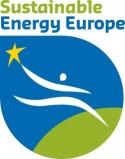New GUIDE on NH3/CO2 Secondary Refrigeration Systems published
21 February 2013
As the next publication to draw attention to technology trends in the field of natural refrigerants, marketing expert shecco has published a free report about the technical, safety and financial implications of using secondary refrigeration systems combining the use of ammonia (NH3) and carbon dioxide (CO2) refrigerants.
The GUIDE “Examples of NH3/CO2 secondary systems for cold store operators - Meeting the Emissions, Energy Efficiency and Safety Targets” is addressed to industrial end-users looking for guidance on selecting technology solutions that provide investment security at high efficiency and safety levels. It provides an overview of secondary refrigeration systems and natural refrigerants, introduces the reader to the overall layout and specification of components, as well as outlines in a best-practice guide how to respect safety rules for ammonia and carbon dioxide. Environmental considerations, including direct and indirect emissions, are taken into account to point to the benefits and challenges connected with the usage of secondary systems. A final section addresses the economic dimension of using secondary systems, including capital costs and running costs for operation and maintenance.
“shecco is happy to present its next publication about a future-proof technology offering a solution for the cold storage industry in Europe and beyond. 70% of energy consumption in cold store is attributable to the refrigeration plant alone. The systems described in this GUIDE are part of a toolbox to achieve 20% and more energy savings, at negligible direct greenhouse gas emissions and high safety levels,” says Nina Masson, Head of Market Research, shecco.
The challenge for the European cold store industry: Reducing greenhouse gases at increasing efficiency
Endorsed by the “Sustainable Energy Europe” programme, the GUIDE also features an introductory message by Member of European Parliament Britta Thomsen. “I am happy to see that Danish industry has picked up the challenge put to them by Danish policymakers and developed energy efficient heating and cooling technology that does not depend on climate warming gases. I hope that this progress can be an inspiration for other countries to take further action on climate change at a national level and implement measures that will promote climate friendly technologies,” Thomsen states.
Content
The report features the following content:
- Cold Store Industry Profile: global growth trends; the European cold store market drivers; typical size of cold storage facilities and required temperature levels
- Regulatory Framework: developments at the international level, the European Union level, and the national level
- Secondary Systems in Industrial Refrigeration: about natural refrigeration
- Technology – NH3/CO2 Secondary System: key components of ammonia-CO2 pumped systems; environment; safety; costs
- Best-Practice Guide for End-Users: considerations of CO2 unique properties; optimising operation efficiency through controls and other measures
- Case Studies: seven real-life examples of secondary refrigeration systems
More information
Contact shecco's market research team: research@shecco.com
Publication
GUIDE 2013: Examples of NH3/CO2 Secondary Systems for Cold Store Operators
Source
sheccoSupporter


